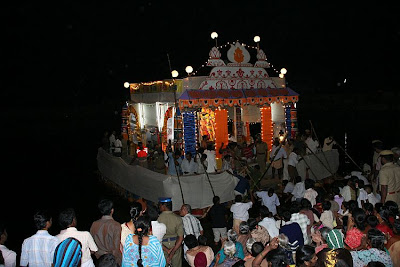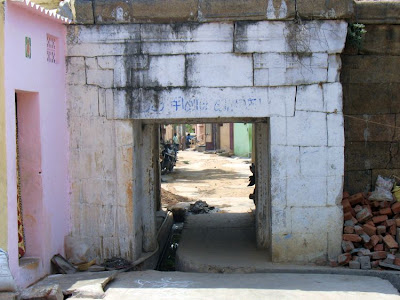Brahmotsavam is intended to teach us the way to divine self-realisation. The last of the celebratory observances during Karthigai Festival is Thirthotsavam which literally means “water festival”. Four days are allocated at the end of Deepam to celebrate the water festival at Ayyankulam Tank in front of Arunagirinathar Temple (the third oldest Shiva Temple at Arunachala). The water festival is representative of the sadhaka’s plunge into the higher realms of consciousness – and typifies an entering into samadhi... an end of religious aspiration.
 |
| Sri Chandrasekaran |
The Theepal for the Gods are floating structure made up of drums and timber and decorated with lights, flowers, religious paintings and silken buntings. Lights are installed around the perimeter of the tank and focus lights placed at strategic points. When the murtis of the Gods come to Ayyakulam Tank they are placed lovingly on a float and then the float pushes off and completes an allocated number of turns upon the Temple Tank. Devotees sit on the steps of the tank to take darshan of the God on the Theepal. Thereafter the deity of that day is taken in procession around the four Mada Streets (perimeter streets) surrounding Arunachaleswarar Temple.
 |
| Float on Ayyakulam Tank, Arunagirinathar Temple |






























































